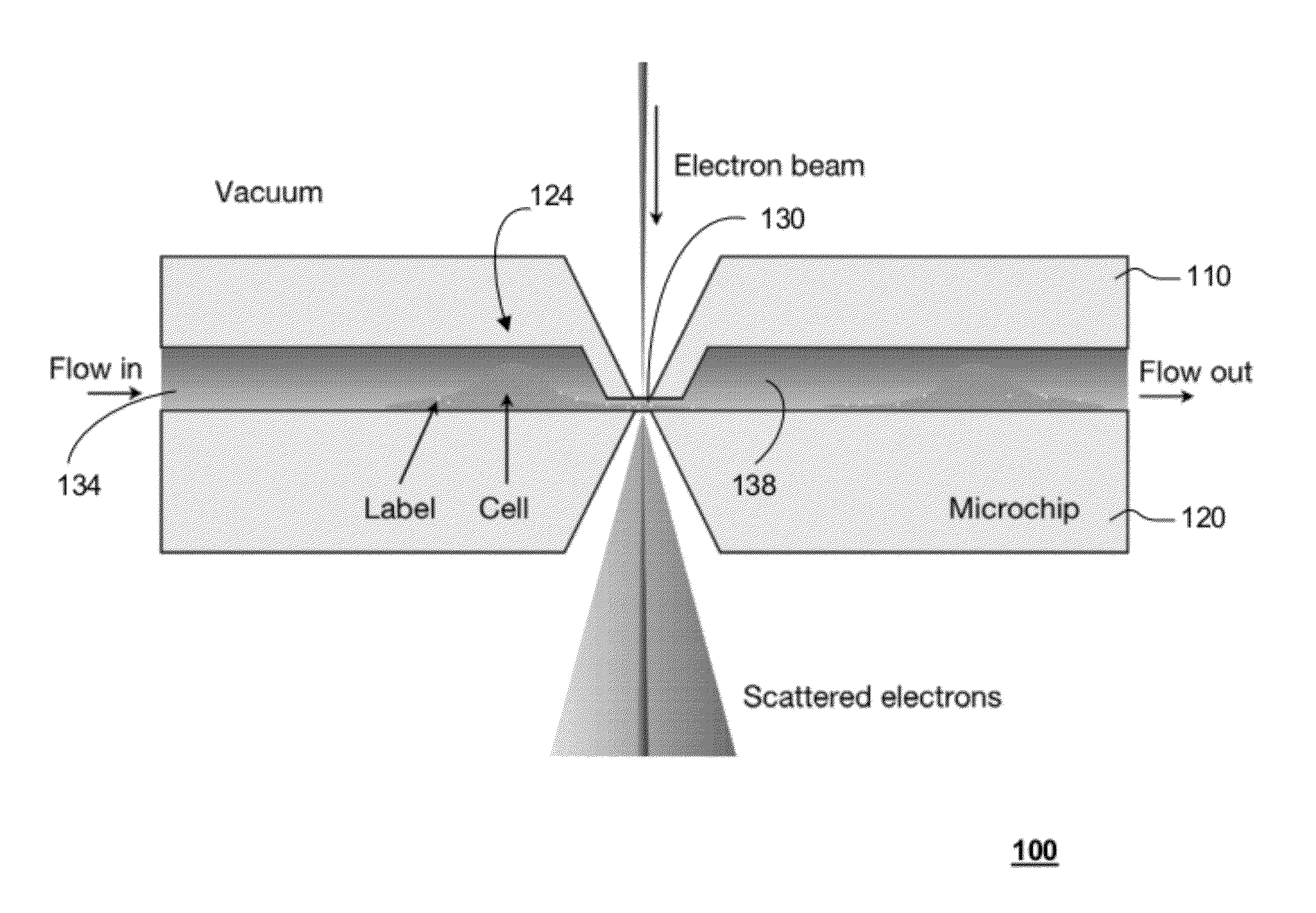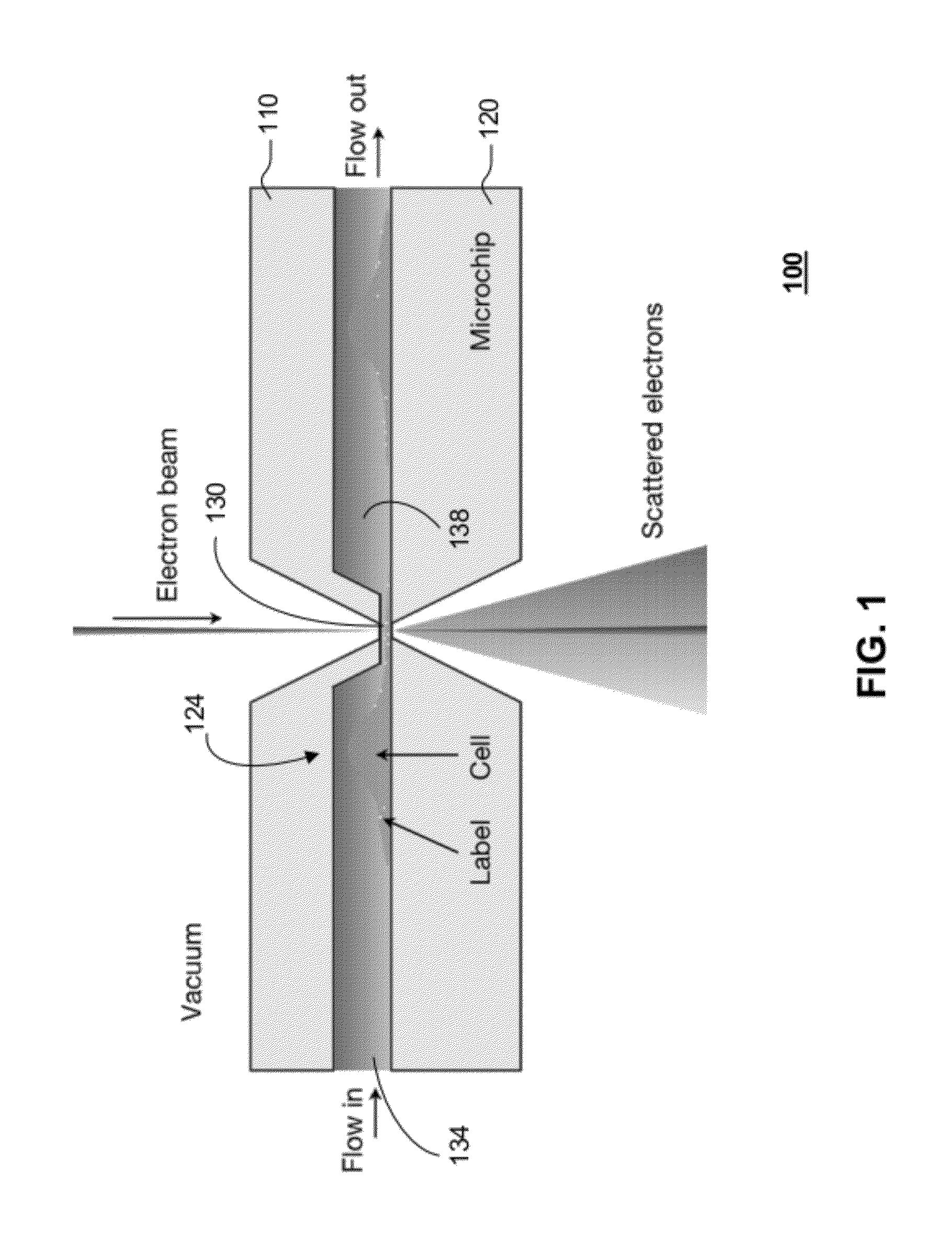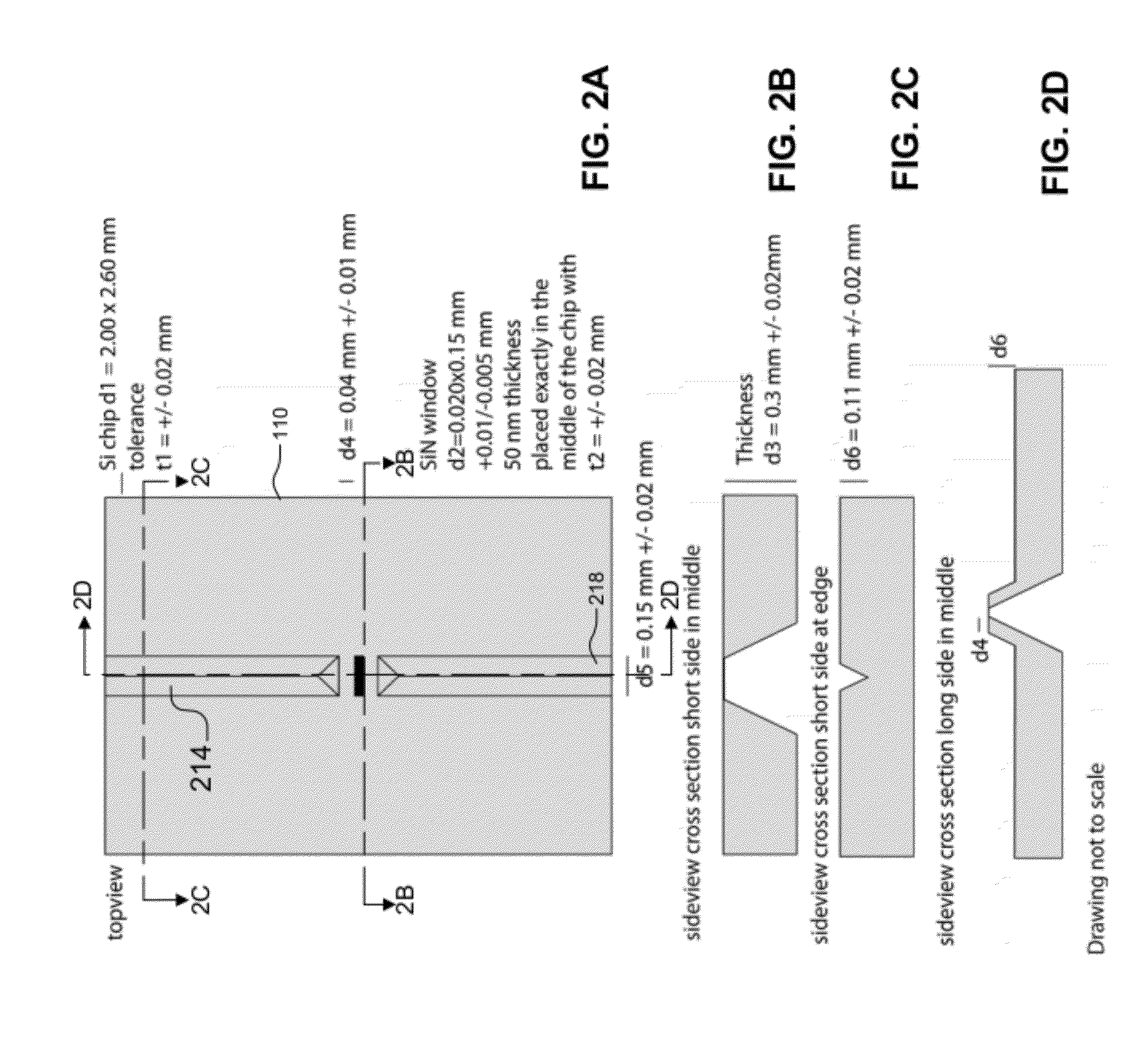Transmission electron microscopy for imaging live cells
a technology live cells, applied in the field of transmission electron microscopy, can solve the problems of limited spatial resolution of diffraction, inability to resolve on a molecular level, and limited technique resolution of live cells, and require special fluorescent labels
- Summary
- Abstract
- Description
- Claims
- Application Information
AI Technical Summary
Benefits of technology
Problems solved by technology
Method used
Image
Examples
example 1
[0092]Microfluidic Chamber with Electron Transparent Windows
[0093]According to one embodiment of the present disclosure, live cells in liquid are enclosed in a microfluidic chamber shown schematically in FIG. 1. This enclosure is placed in a vacuum of a TEM. The bodies of the cells grow in the two larger sub-chambers, while thin regions of the cell grow into and through a thin sub-chamber. The electron beam propagates through the thin sub-chamber. The thickness of the thin sub-chamber can be adjusted to optimize for a particular experiment. For TEM imaging with phase contrast, or scatter contrast, it is desired to maintain the total sample thickness below one micron, which can be done by setting the thickness of the thin sub-chamber to this value. The TEM can also be operated in scanning mode, so called STEM. Specific high-Z labels can be used to recognize proteins or other molecules. Liquid is flown through the system.
[0094]One key component for live cell TEM is a microfluidic cham...
example 2
[0098]Liquid Specimen Holder Used in Conjunction with a Microfluidic Chamber for Live Cell TEM
[0099]The microfluidic chamber 134 is then placed in a vacuum of a transmission electron microscope using a specimen holder 410 for liquid flow. FIG. 4 shows schematically the specimen holder 410 according to one embodiment of the present disclosure. The specimen holder 410 is of the side-entry type. The specimen at the tip 420 (right end) is connected with liquid tubing to a liquid flow system outside the microscope. An O-ring 414 on the shaft 418 separates the outside air from the vacuum 422 inside the microscope.
[0100]FIG. 5 shows schematically a top view of the slot in the tip 420 of the liquid specimen holder 410, according to one embodiment of the present disclosure. The two microchips 110, 120 are placed on top of each other, with their top surfaces facing each other. They align on their precision made sides via the use of alignment poles 610. Liquid flows from and to liquid ports 61...
example 3
[0102]Live Cell TEM Using a Microfluidic Chamber with Electron Transparent Windows
[0103]In one embodiment, typical experimental cells, for example, eukaryotic cells, are seeded on the microchip 120 with spacer 320. The surface 324 of the microchips 120 is made hydrophilic, for example, by plasma cleaning, and the cell adherence may be enhanced by coating with poly-L-lysine. Prior to poly-L-lysine coating, a layer of water repellant may be applied to the SU8 wall, and also to the area enclosed by the SU8, such that cells preferentially grow in the area over the silicon nitride window. Other chemicals may be used as well for this purpose. Cells are seeded locally by micropipetting, only at one side of the silicon nitride window 310, such that the cells fit into the larger sub-chamber 134, 138 when the microfluidic chamber 124 is assembled. Various cell types, for example, COS7 cells tend to adhere on surfaces and stretch out, becoming thinner, and forming long flat edges. Also neurons...
PUM
 Login to View More
Login to View More Abstract
Description
Claims
Application Information
 Login to View More
Login to View More - R&D
- Intellectual Property
- Life Sciences
- Materials
- Tech Scout
- Unparalleled Data Quality
- Higher Quality Content
- 60% Fewer Hallucinations
Browse by: Latest US Patents, China's latest patents, Technical Efficacy Thesaurus, Application Domain, Technology Topic, Popular Technical Reports.
© 2025 PatSnap. All rights reserved.Legal|Privacy policy|Modern Slavery Act Transparency Statement|Sitemap|About US| Contact US: help@patsnap.com



